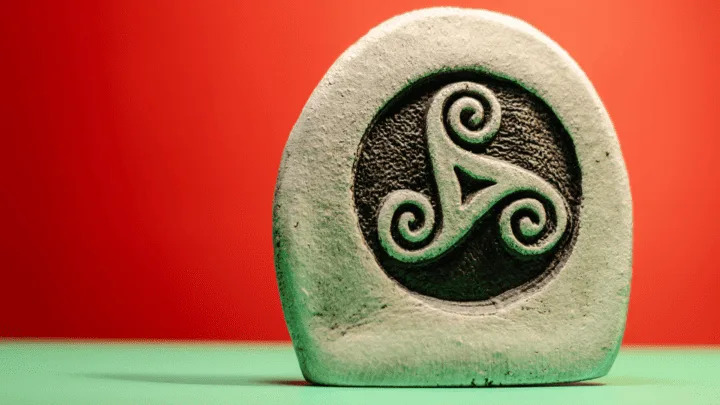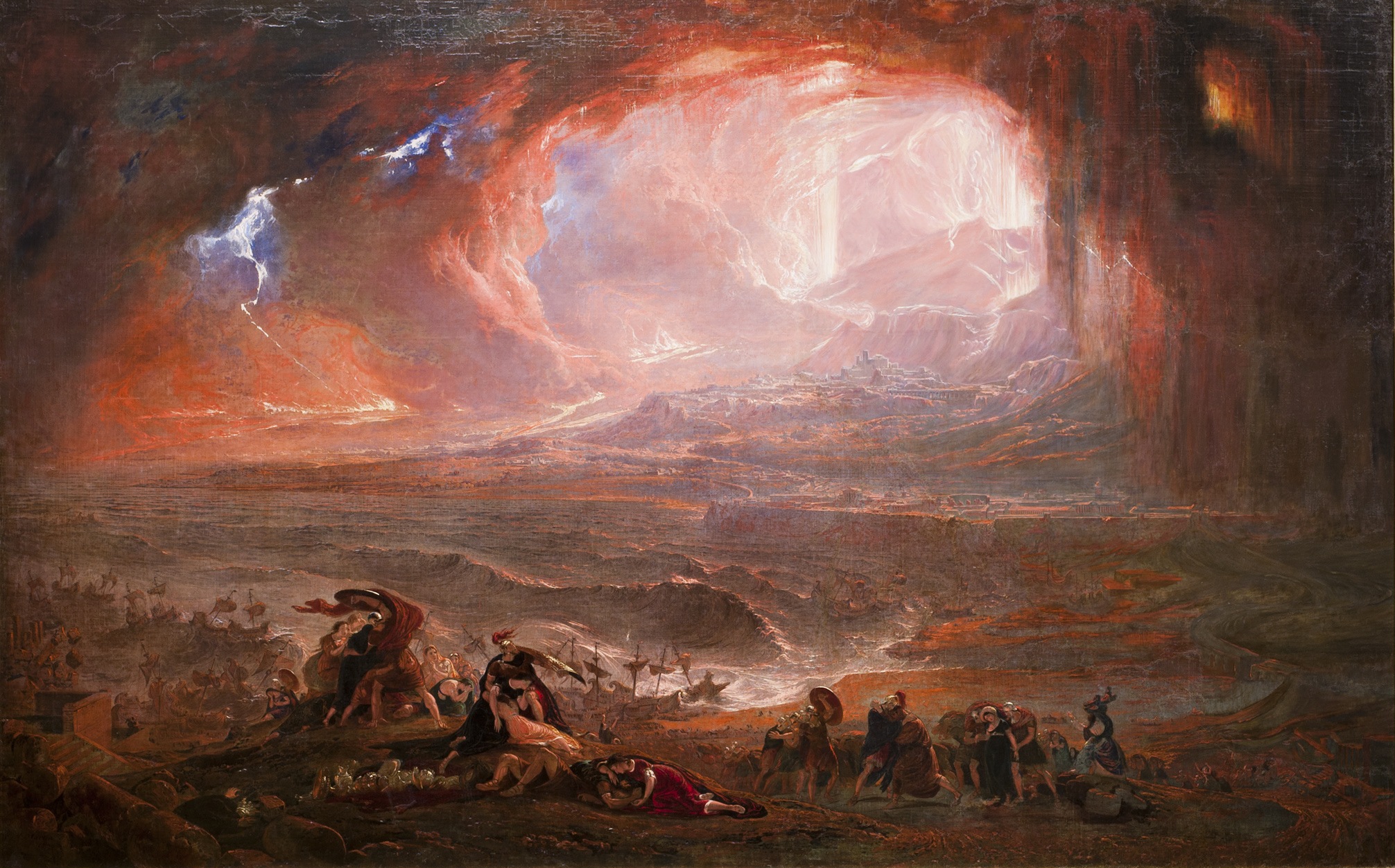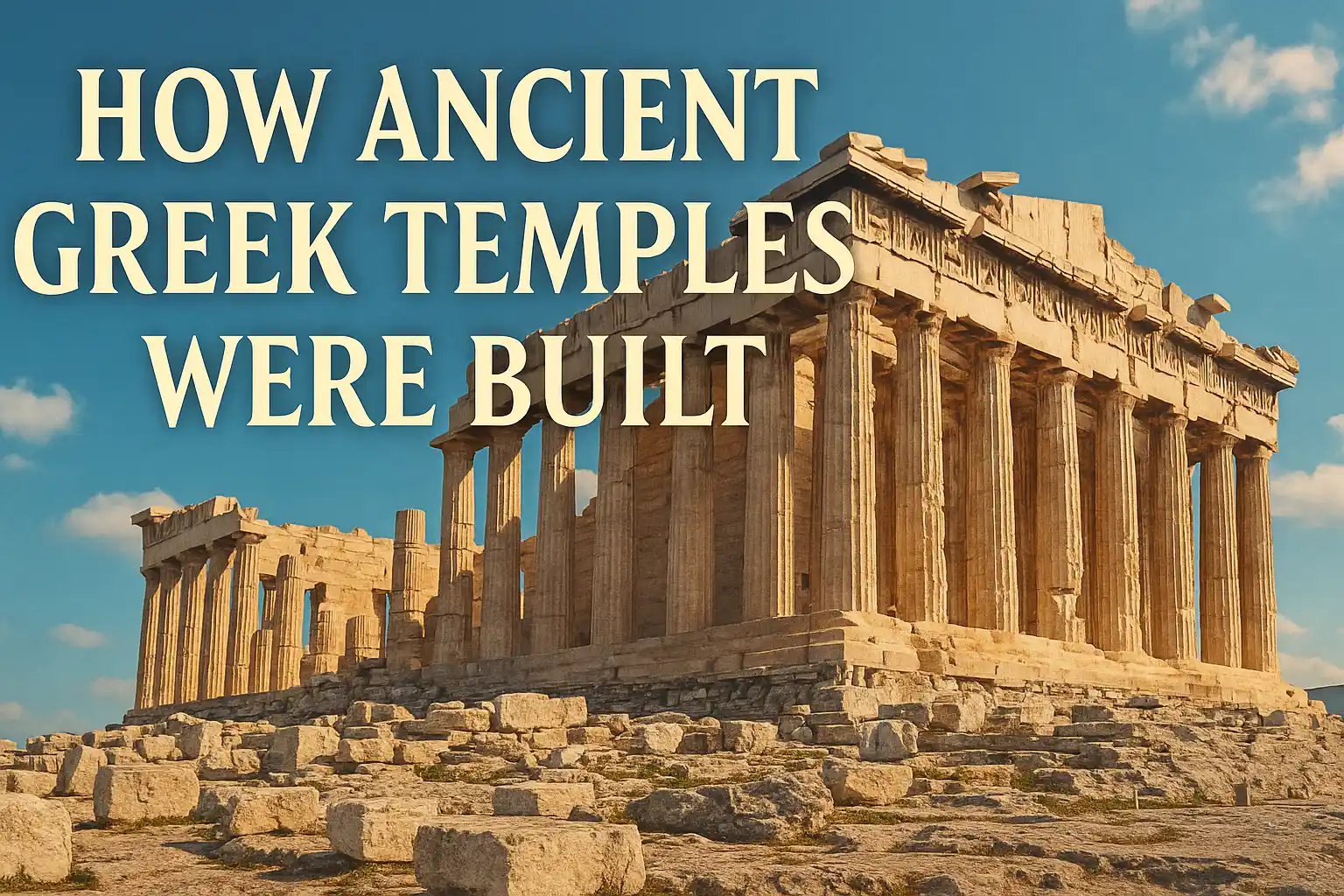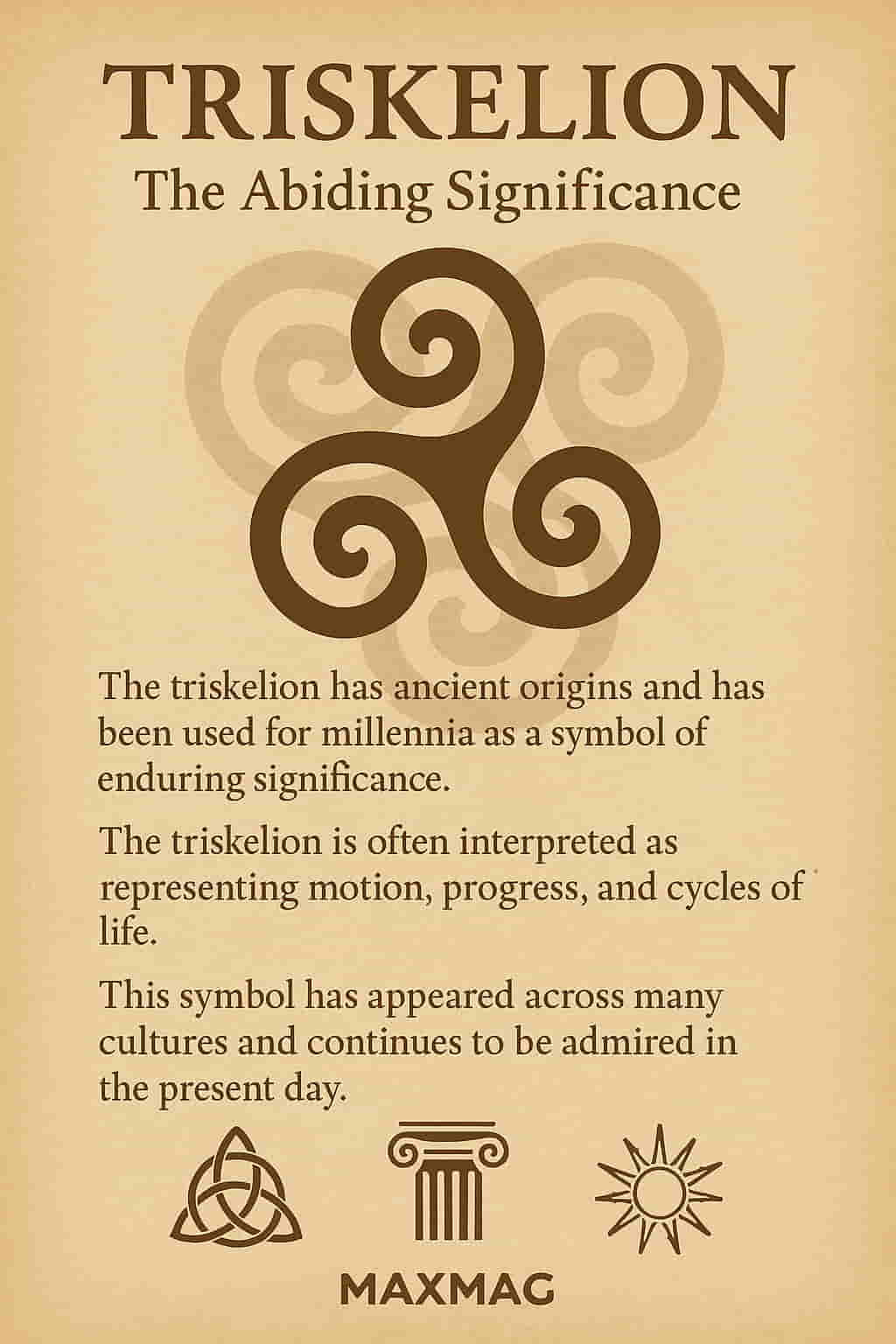
From sunlit prehistoric carvings to today’s body jewelry, the triskelion meaning ancient symbol bridges millennia of human creativity. Also known as triskele or triple spiral, this motif—a swirl of three arms emanating from a center—speaks of motion, rebirth, and balance. Its story spans continents and cultures, including Neolithic Europe, ancient Greece, Celtic rites, and modern design. Yet always, it retains a simple, enduring power: three in motion, one unified whole.
In this article, we embark on a journey through time and symbol. We begin with the origins of triskelion in Neolithic carvings, move through Greek coins and Celtic spirituality, trace its adoption in heraldry and flags, explore its modern use in spiritual and cultural contexts, and unpack its presence in everyday design and personal adornment. We also probe deeper meanings—numerology, psychology, and philosophy—while weaving in expert commentary from U.S. museums, cultural institutions, and scholars. By journey’s end, you’ll understand why the triskelion meaning ancient symbol puzzles, comforts, and inspires us.
Triskelion Origins in Stone: Neolithic Europe and the Birth of Symbolism
The earliest known examples of the triskelion meaning ancient symbol appear cut deep into stones at prehistoric sites such as Newgrange in Ireland (c. 3,200 BCE), Gavrinis in Brittany, and Malta’s Ħal-Saflieni Hypogeum. These spirals, often carved in walls or petroglyphs, were created using simple tools—flints, bone, or sharpened wood—but with striking precision. The triple swirl pattern was intentional and repeated, hinting at deep cultural meaning.
What did the spirals signify for Neolithic people? Scholars suggest the carved lines echoed astronomical cycles: the sun’s movement through seasons, the moon’s waxing arc, or the human engagement with cyclical phenomena like birth, growth, and death. These carvings weren’t mere decoration—they were cosmic statements. Modern interpretations draw parallels to early astronomy and religious ritual sites, linking the triskelion meaning ancient symbol to universal rhythms.
To see these carvings today is to stand before mystery. Museums like the Smithsonian Institution host exhibitions of early stone carvings that highlight spirals and concentric circles—the geometry speaks, even if language fails. It’s here our story begins.
Greek and Sicilian Transformations: Currency, Identity, and the Sea
Jumping ahead a thousand years, the triskelion meaning ancient symbol reappears in Greek art. On pottery, coins, and ceramic plaques, artists crafted three-spiral motifs. Later, on Sicilian coins and regional heraldry, the shape morphed into the “trinacria”—a three-legged form centered on Medusa’s head. In this adaptation, the three legs pointing outward signified the island’s three promontories, possibly symbolizing its unity and strategic position in the Mediterranean basin.
The motif traveled across trade routes. Greek coins bearing the triple spiral exchanged hands in markets from Corinth to Carthage, among sailors, merchants, and travelers. The trojan horse myth, ancient Greek maritime trade, and Sicily’s strategic placement all fueled diffusion. In this period, the triskelion meaning ancient symbol took on layered civic identity—even maritime protection in Carthage might invoke the moving triple spiral.
Celtic Adaptation: Spirals of Life, Death, and the Beyond
By the Iron Age, Celtic artisans covered jewelry, grave markers, and temple stones with triskelion spirals. But here, their emphasis shifted from directional identity to spiritual mysticism. The three arms could symbolize life stages—young adulthood, maturity, and old age—or cosmic domains of earth, sea, sky. In Celtic mythology, triple forms were sacred: triple goddesses, triple deities, triple warriors.
Ritual gatherings reveal that shamans and druids likely used stirling symbols as conduits—markers for spiritual journeys or meditative focus. Triskelion spirals also adorned healing circles, tracing energy flows in ritual dance or meditation. These symbols weren’t just carved—they were embedded in ritual experience, breathing enchantment.
Today, authors at U.S.-based publications such as the National Museum of Ireland and Smithsonian Folklife interpret these motifs as navigational guides for the soul, bridging Celtic philosophy with contemporary mindfulness and earth-based spirituality. These views underline why the triskelion meaning ancient symbol continues to resonate in modern pagan and neo-shamanic communities.
Heraldry, Flags, and Cultural Identity
The triskelion meaning ancient symbol remained persistent into medieval and modern heraldry. The Isle of Man’s flag, adorned with three armored legs meeting in the center, echoes Norse and Celtic multilegged symbols—perhaps nodding to conquest, defense, and inter-island commerce. Sicily’s red-black-yellow banner carries the trinacria, linking back to Greek and Punic eras.
In each case, the triple spiral became civic identity—strength in unity, circular purpose, and island resilience. This symbolism wasn’t abstract—it defined people’s relationships with place. Flags waved at festivals, seals stamped land grants, and the symbol legitimized power.
Spiritual and Psychological Interpretations
Beyond identity, the triskelion meaning ancient symbol serves as a mirror to our internal worlds. Psychologists compare the triple spiral’s three arms to Jung’s three-part psyche: the ego, shadow, and Self. The spirals spiral inward and outward, invoking both personal growth and communal expression.
Spiritual teachers in the U.S. use the symbol in meditative art and yoga spaces. “Focus on each swirl,” one guide invites students, “and feel life’s movement in your own breath.” The swirl’s circular intention echoes modern mind/body healing trends.
Modern Design & Applications
From corporate branding to wearable accessories, the triskelion meaning ancient symbol is both ancient and contemporary. In design magazines like FastCompany, the symbol appears in startup logos, symbolizing forward motion and multidirectional thinking. Architects incorporate triple spirals in floor patterns to represent continual journey and spatial awareness.
Jewelry artisans in New York and San Francisco sell delicate triskelion pendants with inscriptions like “Balance in Motion.” A popular artisan, Spiral Origins, notes: “Clients of all faiths find the spiral visually calming, spiritually grounding, and aesthetically strong.” They add: “The triskelion transcends religious boundaries—it’s geometry and soul.”
Cultural Revival and Activism
Recently, the triskelion meaning ancient symbol surfaced in cultural revivals. In Brittany and Cornwall, organizations launched heritage festivals and crafts workshops featuring spiral carving and pottery. These events reignited public interest, fusing geography, genealogy, and community arts.
Educators at U.S. universities use the spiral as teaching tools in interdisciplinary classrooms: archaeology, art history, and cultural studies. Beyond academic tracts, they encourage students to interpret it in modern contexts—urban graffiti, emoji culture, even NASA mission logos.
Iconic Uses in Film, Fiction, and Games
In pop culture, the triskelion meaning ancient symbol dances in film and gaming. In Marvel’s Agents of S.H.I.E.L.D., the spiral appears faintly in laboratory art—suggesting hidden power. Fantasy writers describe triskelia carved into dragon gates or elvish cloaks.
Video games like Outer Wilds use triple-spiral emblems to represent the Sun Station or philosophical quests. Designers choose the motif to evoke mystery, repetition, and cosmic grandeur.
Why the Triskelion Still Speaks
Ask a random group what captivates them about this simple design, and themes emerge:
-
Balance in complexity – 3 arms in symmetry, yet dynamic
-
Connection across time – ancient rock art and modern minimalism
-
Versatile symbolism – life cycles, growth paths, cultural lines
-
Visual harmony – pleasing geometry with deep roots
The triskelion meaning ancient symbol thus continues to matter. It supplies us with a bridge between human need to belong, evolve, and express.
Building Meaning: Design Guidelines for Triskelion Use
Want to incorporate the spiral into design or jewelry? Consider:
-
Line Quality:
Carved spirals feel ancient; sleek vector spirals feel modern. -
Center Treatment:
A blank core suggests openness; a filled dot can anchor meaning. -
Direction & Movement:
Clockwise implies sunny momentum; counter-clockwise, reflection. -
Contextual Layering:
Overlay on textiles? Include triple angels? Choose color and gradient for your target audience. -
Cultural Respect:
Don’t use it casually in trademarked regional designs. Honor Cornish, Sicilian heritage when referencing them.
FAQ – triskelion meaning ancient symbol
Q1: What exactly is a triskelion?
A motif with three spirals or arms radiating from a central point—found in Neolithic carvings, Greek coins, Celtic art, and more.
Q2: How old is the symbol?
At least 5,000 years—found on carved stones dated to 3,200 BCE in Ireland and Brittany.
Q3: Where can I see original triskelia?
Visit sites like Newgrange (Ireland), Gavrinis (France), and Malta’s Hypogeum. U.S. institutions like the Getty Museum often feature ancient motif exhibits with related interpretations.
Q4: Is it always religious or spiritual?
No—sometimes poetic, civic, decorative. But often layered with symbolism of cycles, movement, or unity.
Q5: Can I use it in my logo or jewelry?
Yes—if designed thoughtfully. Acknowledge cultural roots when referencing original carvings or flags.
Q6: Why do people still use it?
Its shape is visually appealing, rich in meaning, and flexible—usable in spiritual contexts, art, branding, or personal expression.





